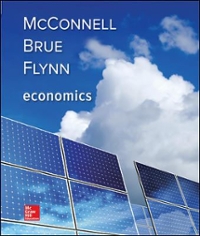Question
1 Anticipating behavior changes? Consider a consumer who consumes two goods: food (good 1) and money spent on all other goods (good 2), with utility
1 Anticipating behavior changes? Consider a consumer who consumes two goods: food (good 1) and money spent on all other goods (good 2), with utility function U(x1, x2) = axb 1 + x2, and budget constraint p1x1 + x2 = I, where a, b > 0 and b < 1. Notice that we have set p2 = 1. 1.1 Find the demand functions for goods x1 and x2, as a function of the price p1 and income I, and the parameters a and b. (Do not worry about second order conditions, they will hold.) Find the expenditure spent on food (x1). 1.2 Use your derived demand functions to explain how an increase in the price of food will affect the consumption of food, and of good 2. Do the same for an increase in income. Explain why these results are or are not expected. 1.3 For a = 40 and b = 0.5, and p1 = 10 and I = 1000, find the optimal consumption bundle. How much money does the consumer spend on food? 1.4 Suppose the government subsidizes food consumption by paying a tax credit equal to half the cost of food. In effect, the price of food is now p1/2. Write a new budget constraint that would be appropriate for the consumer, given this tax credit. Derive the corresponding demand functions, and explain how this rebate affects the consumption of food, and of good 2. 1.5 Solve for the optimal consumption bundle using the numerical values given in part 1.3. How much does the tax credit cost the US government? The tax credit rate is 50%. Does the tax credit equal 50% of the prerebate amount spent on good 1, calculated in part 1.3? Why or why not? [In answering this question, you have illustrated a principle that is easily neglected, but important to keep in mind when assessing proposed policy interventions. Think of an initial situation characterized by the equilibrium you 1 calculated in 1.1. Now suppose the government would like to subsidize the consumption of x1. The assessment of this policy may depend partly on estimates of its cost. An obvious approach is to identify the amount spent on x1 in 1.1, and then take ten percent of that amount (since the government is subsidizing ten percent of the cost). As your calculation 1.5 shows, this will underestimate the cost. (Conversely, if we used this method to estimate revenues of a new tax, we would overestimate the revenue.) What this calculation is missing is that the subsidy will prompt a behavior response that will make the program more expensive. The admonition that we need to take such effects into account is often referred to as the Lucas critique, after 1995 Economics Nobel Laureate Robert Lucas. While this seems a simple point, most of the estimates one encounters in the popular press, and many of the estimates produced by government research, ignore this point, and hence routinely overestimate revenue and underestimate cost.]
Step by Step Solution
There are 3 Steps involved in it
Step: 1

Get Instant Access to Expert-Tailored Solutions
See step-by-step solutions with expert insights and AI powered tools for academic success
Step: 2

Step: 3

Ace Your Homework with AI
Get the answers you need in no time with our AI-driven, step-by-step assistance
Get Started


